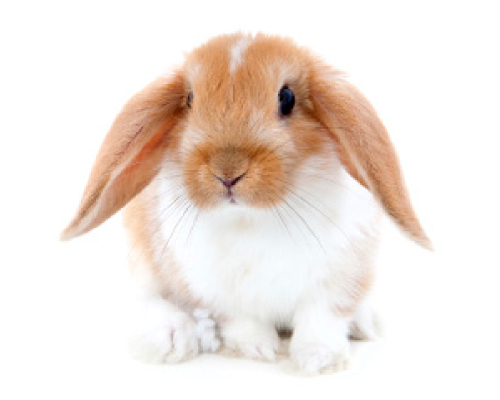Main Content

Winter is a difficult time for many animals, including rabbits. Rabbits are more able to cope with cold weather conditions than hot conditions, but given the wrong conditions, rabbits can suffer from exposure, frostbite, and decreased body temperature. Smaller breeds of rabbits may be more susceptible to cold temperatures than larger breeds of rabbits because their small body mass cannot retain heat as well.
Most rabbits housed outdoors will not need a heated environment to make it through the winter, but it is important to position the rabbit hutch to avoid wind, snow, and water blowing into the cage from the sides and bottom. Rabbits should be able to get away from the cold and wind. Hutches should also be off the ground to allow colder temperatures near the ground to affect the rabbit less.
The back of the hutch should be facing north and should be solid or positioned against a building. This prevents the cold north wind from entering the hutch. A south-facing hutch will allow the warmer air to enter.
The sides of the hutch should be boarded up, and the front, south-facing side of the hutch should be partially covered to prevent wind and snow from entering. Additionally, if your hutch does not have a dropping pan, you might want to place boards around this open area.
It is important that you don’t close off your rabbit’s cage too tightly. Rabbits need plenty of fresh air, and being enclosed with the fumes from their urine may cause respiratory distress.
An easy way to keep your rabbit comfortable and safe during the winter is to place straw in the nest portion of the hutch. It is recommended that straw be used over hay because straw has better insulating properties, and rabbits are less likely to eat this type of bedding. In extreme cold, rabbits are reluctant to go out in the cold and will, as a result, urinate and defecate in the nesting area. Thus, the straw will need to be changed periodically to maintain a clean and warm environment for the rabbit.
Food and water during the winter is also very important. More calories will be needed to maintain body heat. Adding a little more food to the food bowl will help increase caloric intake, as will adding a little alfalfa hay for nibbling. However, it is important that you do not overfeed your rabbit.
Water should be available to the rabbit at all times, even if it means changing the water and removing the ice multiple times a day.
Having a healthy rabbit and a rabbit with a good coat of fur is essential to keeping your rabbit safe and warm through the cold winter months.
For more information, visit the Companion Animal section of eXtension.
By Jeannette Rea Keywood, State 4-H Agent, Department of 4-H Youth Development, Rutgers Cooperative Extension
Adapted from “Cold Weather Care for Your Rabbits” article in eXtension by Brett Kreifels, University of Nebraska-Lincoln